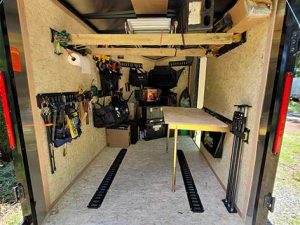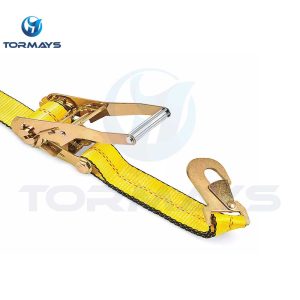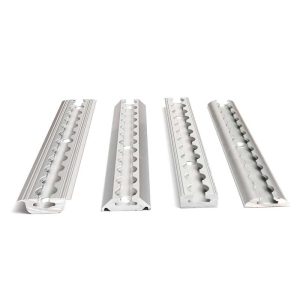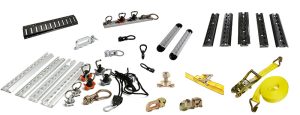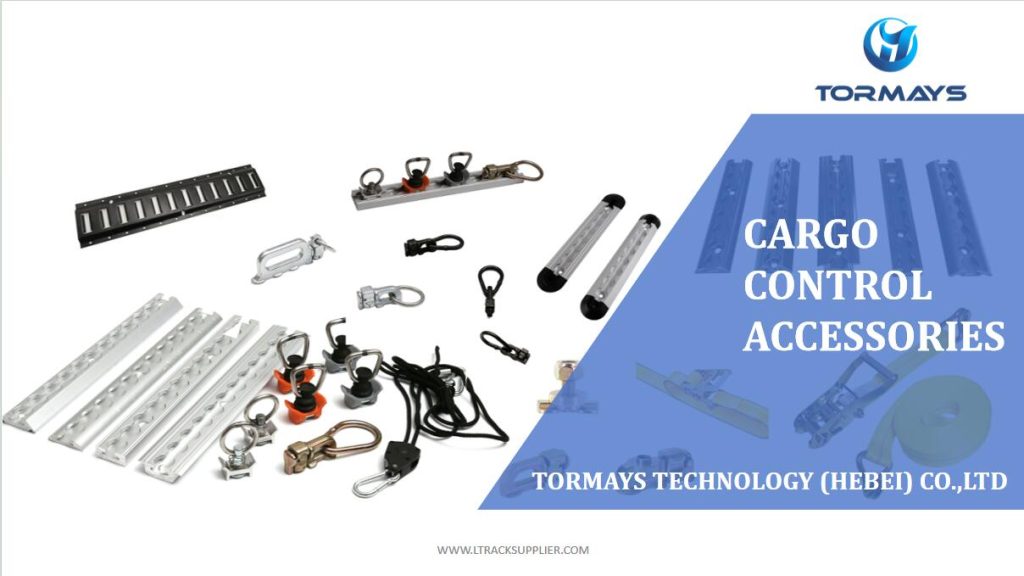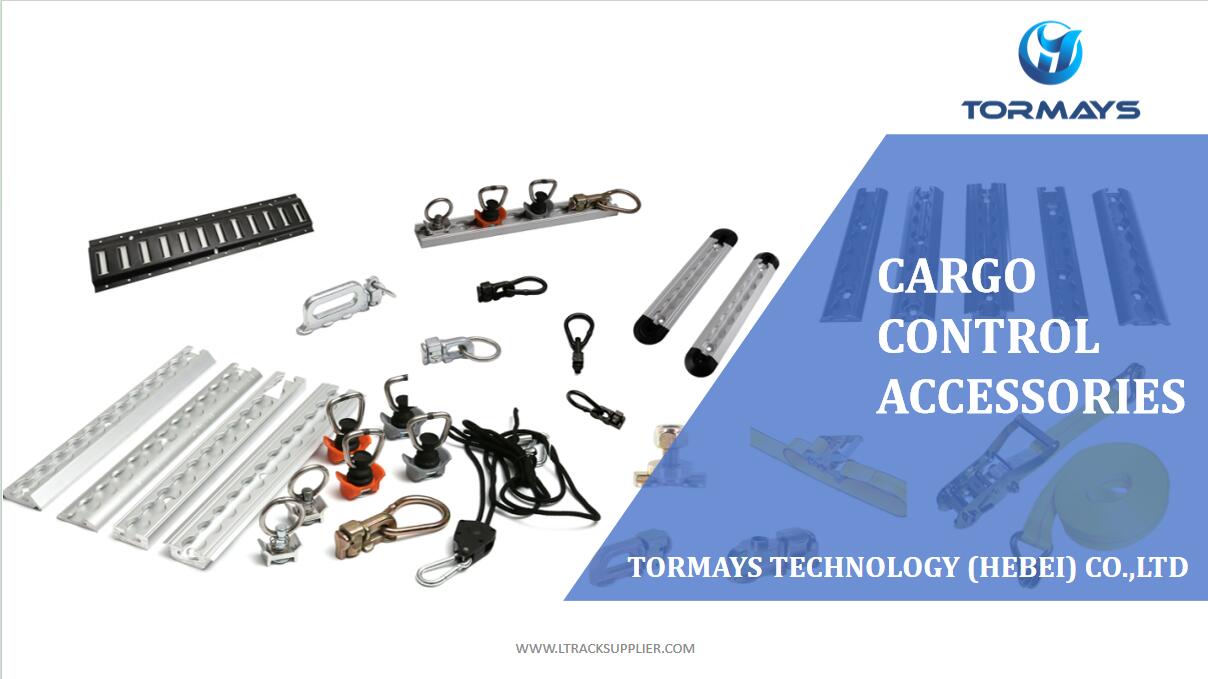In industrial, commercial, and residential settings, secure storage and organization are vital. L Track, also known as Logistic Track or Airline Track, is a versatile solution often used to secure cabinets to floors for stability and enhanced safety. In this guide, we’ll walk you through the process of mounting L Track cabinets to the floor, providing step-by-step instructions, tips, and best practices.
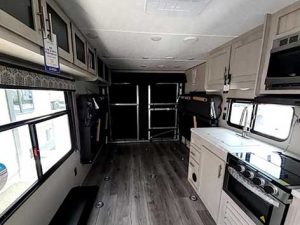
Why Choose L Track for Mounting Cabinets?
L Track is a popular choice for several reasons:
1. Durability: Made of strong aluminum or steel, L Track can withstand heavy loads and harsh conditions.
2. Flexibility: L Track’s low-profile design is perfect for tight spaces, and it allows for various configurations.
3. Safety: When installed correctly, it prevents cabinets from tipping or shifting, reducing the risk of accidents.
Materials and Tools Needed
Before starting the installation, gather the following:
Materials:
– L Track strips
– L Track fittings (studs, tie-down rings, or brackets)
– Screws or bolts suitable for the floor material
– Washers and nuts (if using bolts)
– Cabinet brackets or mounting hardware
– Adhesive sealant (optional, for extra grip)
Tools:
– Drill with bits
– Screwdriver or wrench
– Measuring tape
– Level
– Marker or chalk
– Vacuum or broom (for cleaning debris)
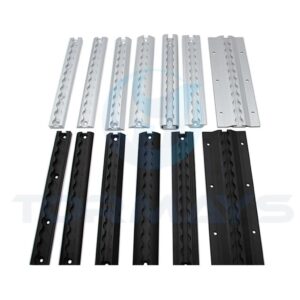
Step-by-Step Guide to Mounting L Track Cabinets
1. Choose the Right Location
Identify the location where you want to mount the cabinet. Consider:
– Weight distribution: Ensure the floor can handle the load.
– Accessibility: The cabinet should be easy to access without obstructing pathways.
– Surface type: Determine whether the floor is concrete, wood, or metal, as this affects the type of screws or bolts you’ll need.
2. Measure and Mark
Use a measuring tape to determine the dimensions of the cabinet base. Mark the exact locations for the L Track installation:
– Place the marks parallel to the cabinet’s edges.
– Leave enough space for fittings or tie-down rings.
Use a level to ensure the markings are straight.
3. Prepare the Floor
Clean the floor thoroughly to remove dust, grease, or debris. A clean surface ensures better adhesion and easier drilling.
1. Position the L Track:
Align the L Track strips with your markings. Double-check for proper placement.
2. Drill Holes:
Use a drill to make holes at the pre-drilled spots on the L Track. Ensure the depth matches the screws or bolts.
3. Secure the Track:
– For concrete floors, use concrete screws or anchors.
– For wooden floors, wood screws work best.
– For metal surfaces, self-tapping screws or bolts with nuts are ideal.
Tighten the screws or bolts until the track is firmly in place.
5. Attach the Cabinet to the L Track
1. Add Fittings:
Install L Track fittings such as tie-down rings, brackets, or studs. These serve as anchor points for the cabinet.
2. Secure the Cabinet:
– Attach cabinet brackets or straps to the fittings.
– Adjust for a tight fit to prevent movement.
– For added stability, use adhesive sealant between the cabinet and the floor.
6. Test the Installation
Gently push or pull the cabinet to test its stability. If there’s any wobbling, tighten the fittings or screws. A secure mount ensures the cabinet won’t shift during use.
Best Practices for L Track Installation
– Use high-quality materials: Invest in durable L Track and fittings to avoid premature wear.
– Follow weight limits: Check the L Track’s load capacity and avoid exceeding it.
– Double-check measurements: Precise measurements prevent misalignment during installation.
– Regular maintenance: Inspect the fittings and screws periodically to ensure they remain secure.
Common Applications of L Track-Mounted Cabinets
Mounting cabinets using L Track is common in various settings:
1. Workshops: Secure tool cabinets to maintain an organized workspace.
2. Commercial vehicles: Keep storage units stable in delivery vans or trailers.
3. Garages: Prevent heavy cabinets from tipping during earthquakes or accidental bumps.
4. Industrial settings: Safeguard equipment cabinets in factories or warehouses.
Benefits of Using L Track for Cabinet Mounting
1. Enhanced Safety:
Prevent accidents caused by shifting or tipping cabinets.
2. Versatility:
L Track can be used with a wide range of fittings for various cabinet sizes and shapes.
3. Ease of Installation:
Installing L Track is straightforward and doesn’t require specialized skills.
4. Durability:
L Track systems can withstand heavy loads, making them ideal for industrial and commercial applications.
Troubleshooting Tips
– Loose screws: If screws loosen over time, replace them with longer or sturdier ones.
– Misaligned track: Use a level during installation to avoid this issue.
– Floor damage: For sensitive floors, use protective layers under the track.
Final Thoughts
Mounting cabinets to the floor using L Track is a practical solution for enhancing stability and safety. By following this guide, you can ensure a secure installation that stands the test of time. Whether in a workshop, garage, or industrial setting, L Track offers unmatched versatility and reliability for cabinet mounting.
With the right tools, materials, and techniques, you’ll have your cabinets securely mounted in no time.
FAQs
Q1: Can I install L Track on uneven floors?
Yes, but you may need spacers or shims to level the track.
Q2: How much weight can L Track hold?
It depends on the material and specifications of the L Track. Always check the manufacturer’s guidelines.
Q3: Is professional installation necessary?
Not usually. Most DIY enthusiasts can handle the installation with basic tools.
By following these tips and instructions, you’ll master the art of mounting cabinets with L Track, ensuring safety, organization, and peace of mind.

